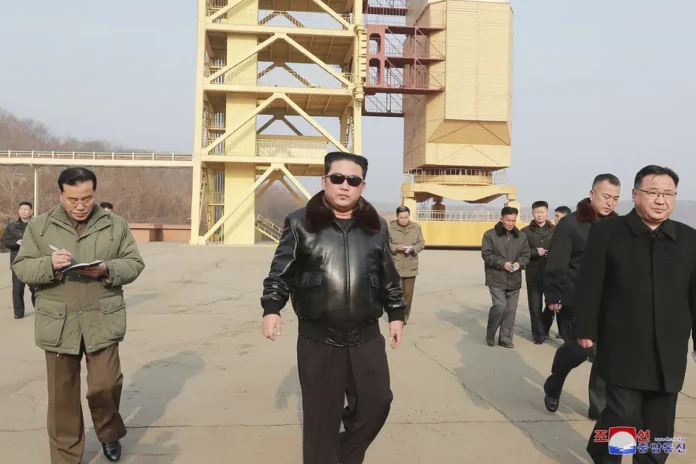SEOUL (AP) — North Korea said Tuesday it would launch its first military spy satellite in June and described space-based reconnaissance as crucial for monitoring U.S “reckless” military exercises with South Korea.
North Korea launched Earth observation satellites in 2012 and 2016, but their capabilities have been questioned. Foreign experts say the previous satellite never sent images back to North Korea, and analysts said the new device, which has been featured in state media in recent weeks, processes high-resolution images. It’s too small to be sent in the air, and it’s poorly designed.
All that movement taken together, along with the announcement of a pending launch, means one is likely imminent, said Dave Schmerler, a senior research associate at the James Martin Center for Nonproliferation Studies, which is part of the Middlebury Institute of International Studies at Monterey. Schmerler knew North Korea could monitor the site from above, rather than installing the rocket under a rail-mounted transfer structure as it has done in the past, so he launched the rocket during daylight hours. He said the assembly was very unusual.
“The point is that the activity is being seen in a launch system designed to hide the activity,” Schmaller told the Associated Press. “This is new and interesting because the normal process is not used.”
Meanwhile, North Korean workers also quickly built a new launch pad within a month, just 2.7 kilometers (1.6 miles) southeast of the pad where all activity was witnessed on Tuesday. The site also appears to have a rail transit system, a newly paved tarmac, lightning towers, floodlights, and camera stands.
Schmerler said the missile complex may have wanted to show off its new facility, given that North Korean leader Kim Jong Un is likely to attend the launch. That would allow North Korea to launch a second time if it so desires.
The International Maritime Organization told the Associated Press that North Korean maritime authorities provided an outline of the country’s satellite launch plans, including the launch period from May 31 to June 11 and the coordinates of areas where wreckage could fall.
The pace of North Korea’s weapons tests and U.S.-South Korea joint military exercises have alternated in recent months.
Since early 2022, North Korea has conducted approximately 100 missile tests, including intercontinental ballistic missiles (ICBMs) intended to reach the mainland of the United States, and launched a series of purportedly simulated nuclear attacks on South Korean targets. also went Pyongyang says its stepped-up nuclear tests are aimed at countering joint military exercises by rival nations, and it continues to use this as a pretext to expand its nuclear arsenal.
In comments released by North Korean state media, senior military official Ri Pyeong-chul criticized joint US-South Korea military drills that North Korea has long described as a rehearsal for an invasion. He said North Korea considers space reconnaissance “essential” to monitor military exercises.
Last week, South Korean and US forces conducted a large-scale fire drill near the border with North Korea. This is the first of five drills to mark the 70th anniversary of the alliance. The U.S. and South Korean governments have described the regular military exercises as defensive, and are expanding drills from 2022 to address evolving threats to North Korea.
Last week, South Korea launched its first commercial-grade satellite, which experts say could provide Seoul with key technology and expertise to place its first military spy satellite into orbit later this year and build more powerful missiles. South Korean and U.S. forces are closely monitoring North Korea for possible satellite launches and other provocative military actions, South Korean General Staff spokesman Han Sung-geun said at a news conference. He declined to give a specific assessment of the potential capabilities of North Korea’s satellites and declined to say whether the South Korean military is prepared for the possibility of debris falling into nearby waters.
The spy satellite is one of a series of high-tech weapon systems that Kim Jong-un has claimed to develop. Other weapon systems on his wish list include solid-fuel intercontinental ballistic missiles, nuclear submarines, hypersonic missiles and multiple warhead missiles.






